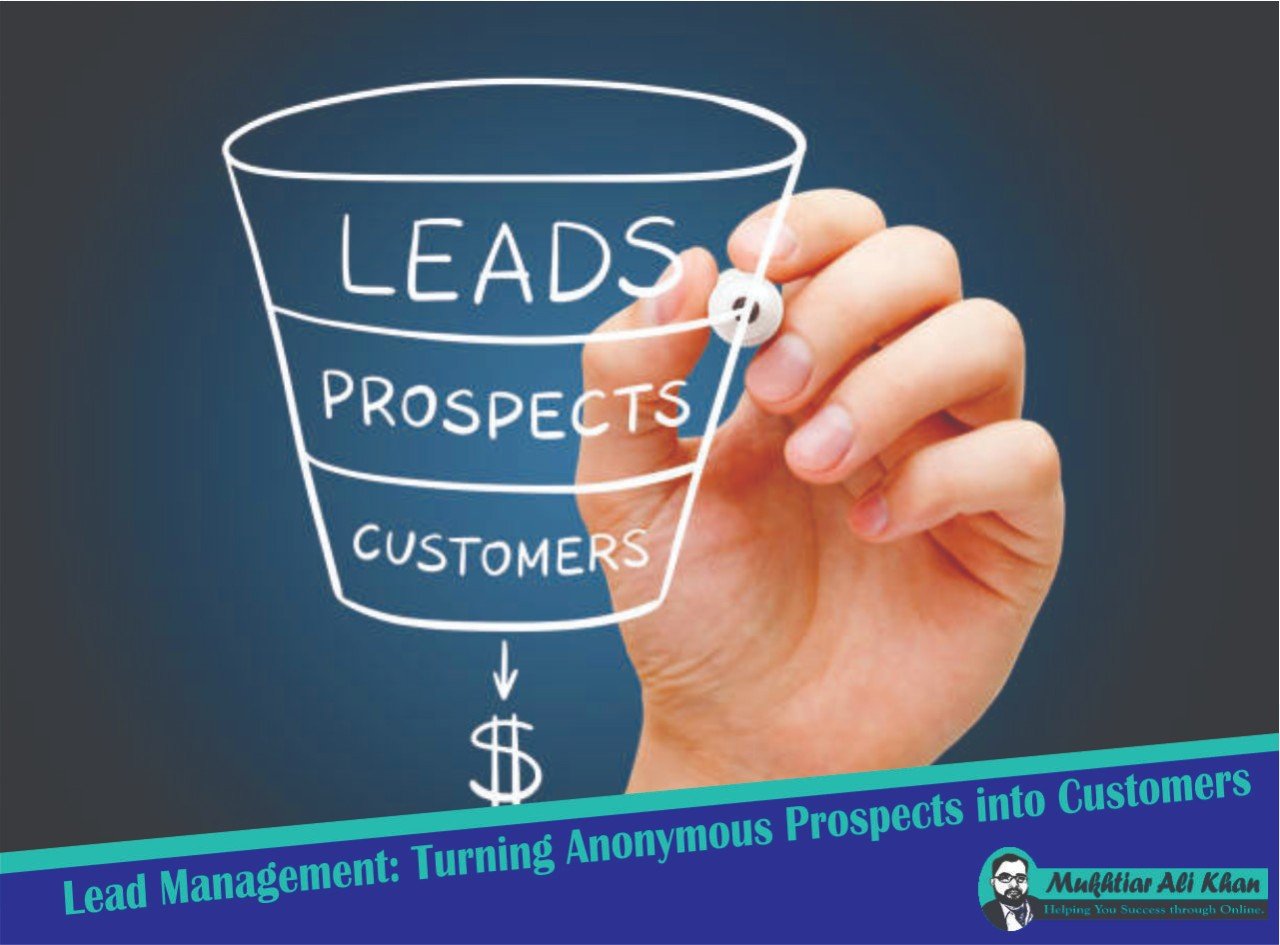Lead management is an approach to customer acquisition. Potential buyers are systematically identified, informed, and contacted: they are accompanied along the customer journey. Read a coherent definition in this blog post and learn which phases a lead management process consists of.

- Definition of lead management: leading contacts sensibly and systematically
- Phase Zero: Goal and target group definition
- Phase 1: Lead generation – data exchange makes contacts accessible
- Phase 2: Lead recording – a data pool is growing
- Phase 3: Lead qualification – potential buyers are filtered out and supplied with relevant content
- Phase 4: Lead Scoring – the leads are rated and further accompanied
- Phase 5: Lead Routing – Handover of valuable leads from marketing to sales
- Conclusion
Definition of lead management: leading contacts sensibly and systematically
Lead management is used to collect and manage personal data to generate sales. It includes all measures that turn anonymous prospects into actual customers as well as measures that increase cross- and up-selling potential.
Leads generate a record when interacting with modern marketing. The technology used provides information about the behavior of users. Lead management accompanies digital prospects over a long path – the customer journey. The decisive aspect is the legally compliant collection of personal data, based on which marketing provides a lead with further information.
This is usually done via email, blog post, white paper, or video. Leads are guided step by step through the customer journey to the point of purchase or the conclusion of the contract.
Ideal lead management tries not to leave prospects along with any of their steps. The term, therefore, includes inbound marketing, content marketing, and marketing automation.
A lead management process in the background of the customer experience usually consists of six phases.
Phase Zero: Goal and target group definition
In an ideal lead management model, there is a preparation for optimized lead management. Here, one’s own goals are specified and the best approach for new prospects is questioned. Anyone who considers this preparation only optional overlooks the benefits of tools such as buyer personas.
These profiles for target groups and decision-makers serve as a template for the preferences of new customers and for optimizing your marketing.
Phase 1: Lead generation – data exchange makes contacts accessible
Optimize lead generation through data automation tools, facilitating seamless data exchange that enhances accessibility to valuable contacts. Elevate your outreach efforts, gather vital information effortlessly, and establish meaningful connections with potential clients. Experience the power of streamlined lead generation and unlock new business opportunities with data automation tools.
The customer journey begins with the first contact. This means that an unknown member of your target group encounters your company for the first time. This first-time visitor should be converted into a returning visitor and contact person. This is the goal of lead generation: the company’s website and media offerings should interest the contact to such an extent that a lead reveals who you or he is by exchanging qualitative content.
This happens, for example, when a reader is interested in one of your offers, an e-book, or a webinar when visiting your website and filling out a form. Or when she or he leaves a comment on your blog article. Ultimately, leads can be generated on all channels, both digital and analog. The exchange of contact data is decisive: In this first phase, the data records of potential new customers are generated for the first time.
Unlock the power of lead generation with data exchange. Discover how these tools for writers enable you to capture valuable contact information, making it easily accessible for targeted marketing campaigns. Elevate your lead generation strategy to new heights.
Phase 2: Lead recording – a data pool is growing
If a contact has expressed interest by voluntarily passing on their data, this data is systematically recorded for structured processing.
At all online touchpoints, the data record is already digital. All analog ways of making contact must be converted into digital data. This creates a data pool for all contacts. These interested parties are the basis of a CRM system.
Leads are therefore recorded in data records. These contain information about the contact, the interaction channel, and the potentially existing customer relationship and are added to the log for each further contact.
Phase 3: Lead qualification – potential buyers are filtered out and supplied with relevant content
With the first contact and correct data acquisition, the qualification – i.e. the closer look at a prospect – has only started. To get to know him further, to explore his interests as precisely as possible, and to accompany him or her during the customer journey, leads are therefore more and more information in marketing.
Each lead in the sales process goes through the qualification process, in which its issues and its perspective on a possible purchase are recorded.
If a company offers sensible content for the desired customer, the need is awakened to speak specifically with sales of the company’s services.
The use of the Flywheel (as the successor to Marketing Funnel) helps here. Leads are accompanied by information in the process of the customer journey so that potential customers are filtered out of the total number of interested parties.
Leads should be differentiated in this phase, as Marketing Qualified Lead (MQL) or Sales Qualified Lead (SQL):
- For interested parties, MQLS stands willing to receive further information.
- SQL stands for those interested in whom a decision – a potential purchase – is just imminent.
Phase 4: Lead Scoring – the leads are rated and further accompanied
The fourth phase in lead management classifies all potential customers of the company using a scale. The result: the assessment of the willingness to buy individual potential customers for the company.
The value determined in this way determines the priority with which a potential customer is processed. Marketing automation tools that support marketing and sales teams, e.g. with email marketing, data maintenance, or reporting, are helpful here.
Read more on the topic: What is marketing automation?
Phase 5: Lead Routing – Handover of valuable leads from marketing to sales
The last phase completes the lead management process. In this, the leads are forwarded to the corresponding sales departments with high sales opportunities.
These passed-down data records have gone through the entire process of qualification. They have a high value for the company already supported by investing.
To avoid part of these financial and temporal investments, some companies now use professional lead generation software. With this, companies that have previously been visiting their website can be uncovered.
Conclusion
Lead Management is a strategy for recording, qualifying, and conversion of potential customers. It is used in all digital marketing forms and runs classically in five (including the preparation of six) phases.
In certain considerations, the lead management process is added to two additional phases:
- Lead reporting uses artificial intelligence and statistics to additionally classify leads – parallel to the phases described above in the process.
- The lead analysis wants to find out what exactly motivates leads about their behavior. Here, search behavior and click behavior as well as their trigger in the content and design of the website are viewed closely.
Both additives need digital tools.
Once a lead has gone through the lead management process in marketing, it reaches the critical interface between marketing and sales processes.
At this stage, there is a qualified sales opportunity for the company. This core step in lead management can be refined and optimized from start to finish—from lead generation to lead transfer—using the right content marketing tools and software.





